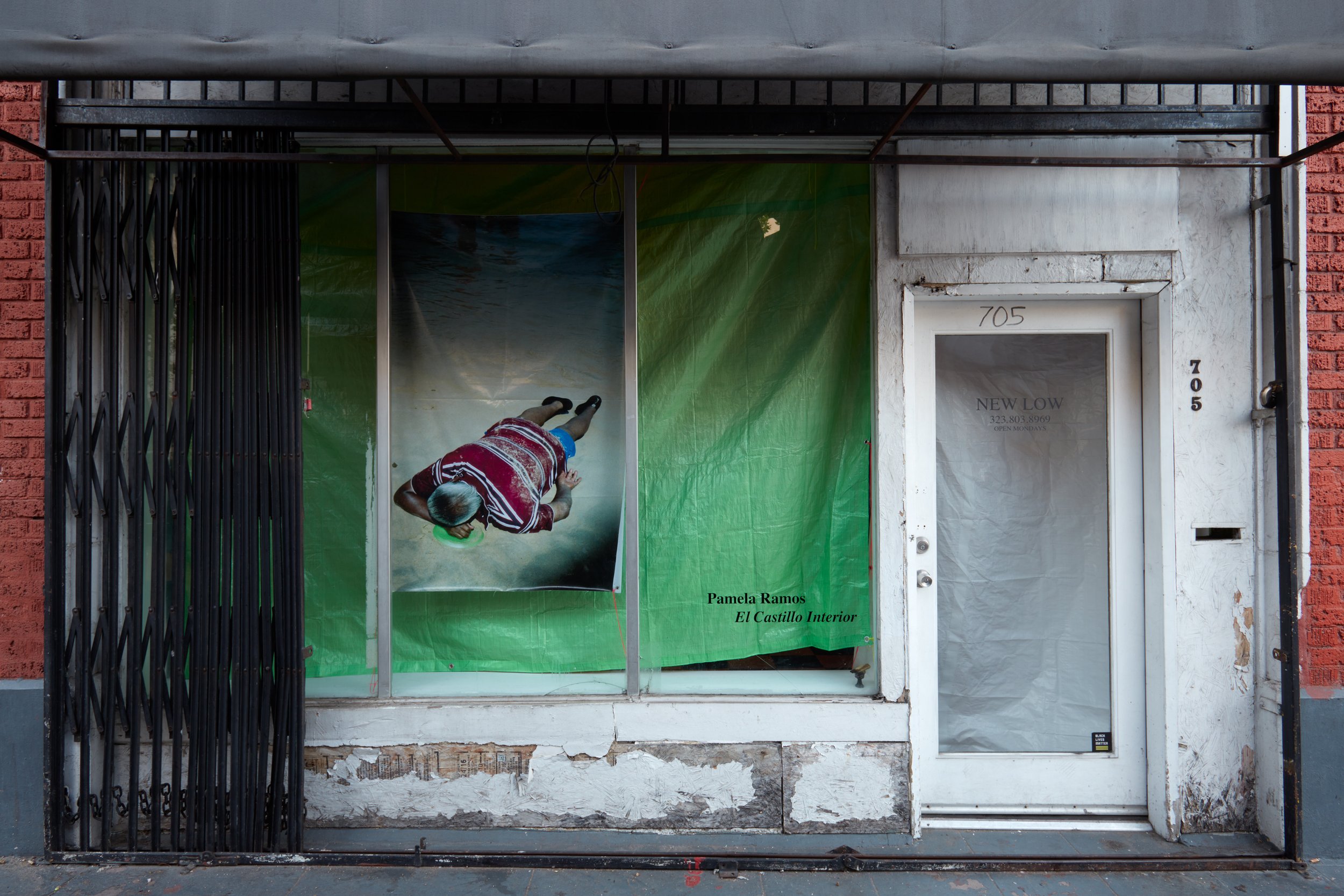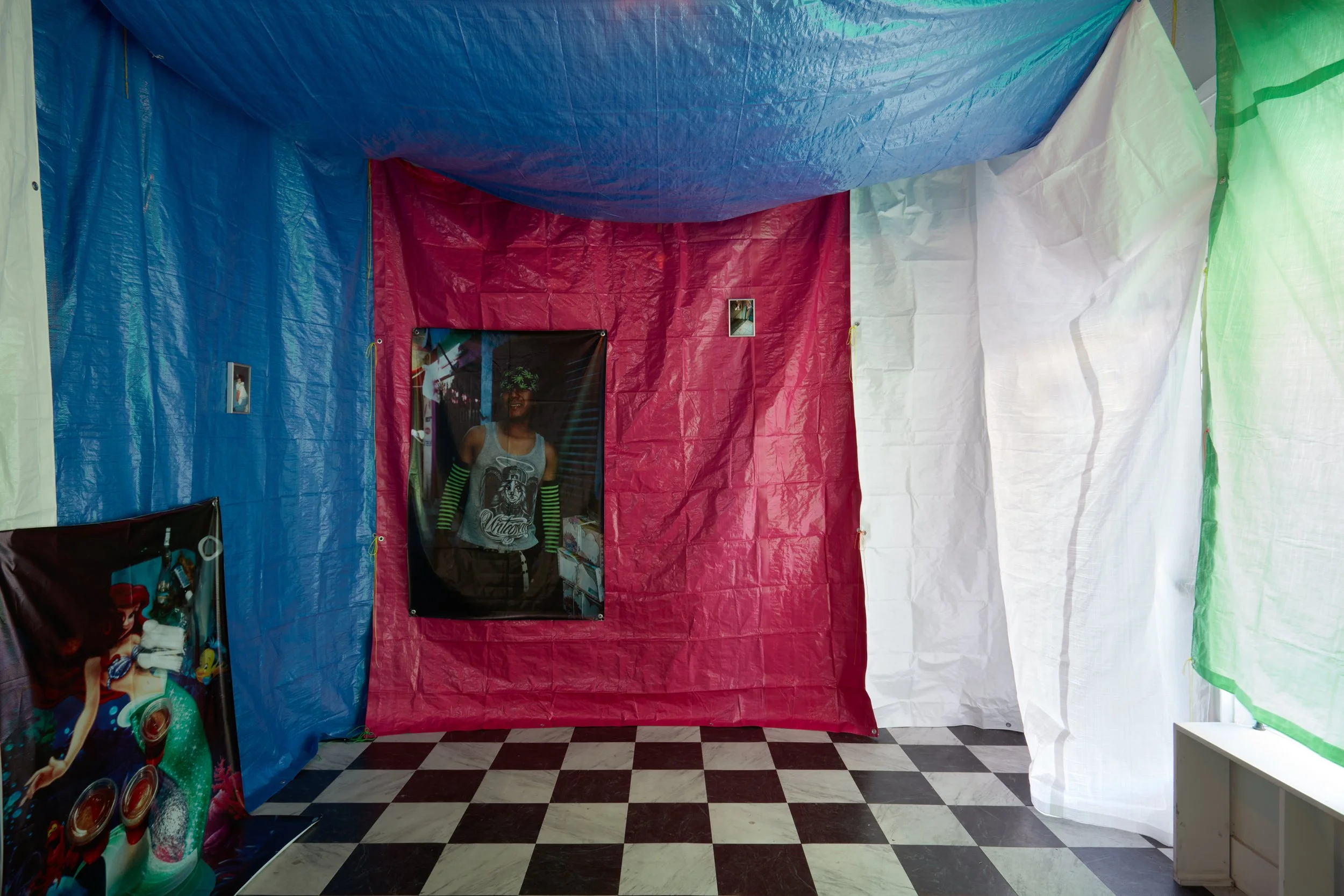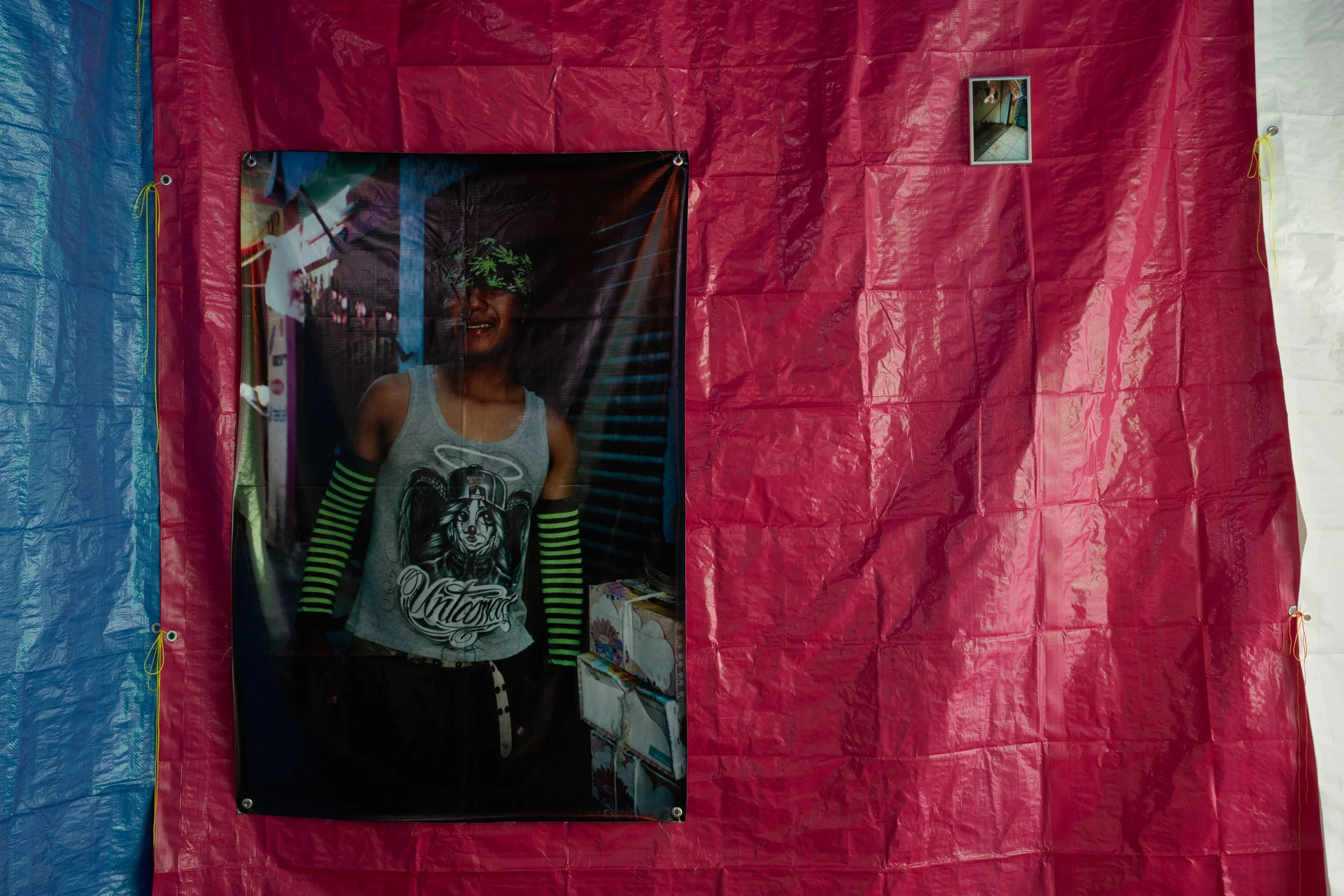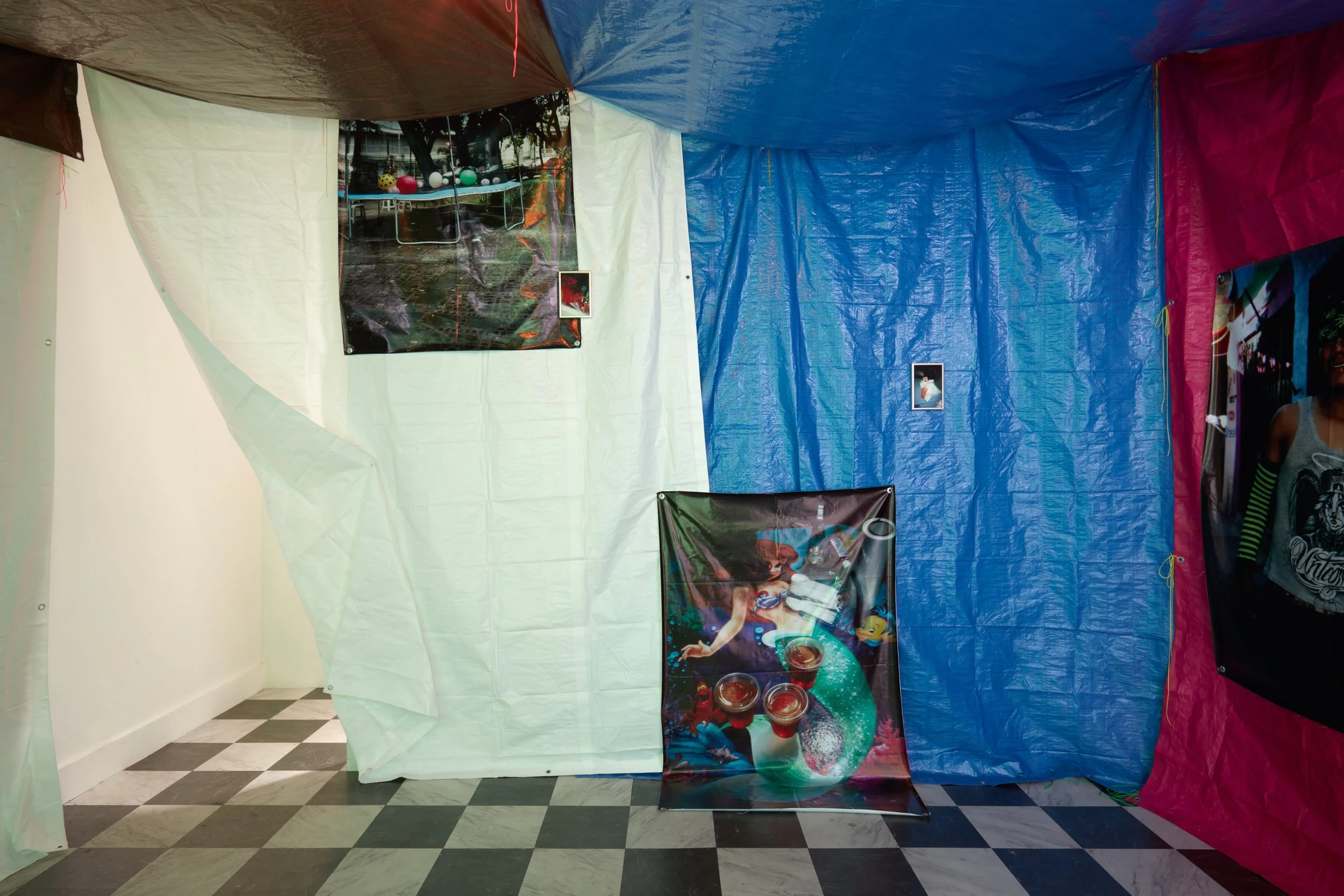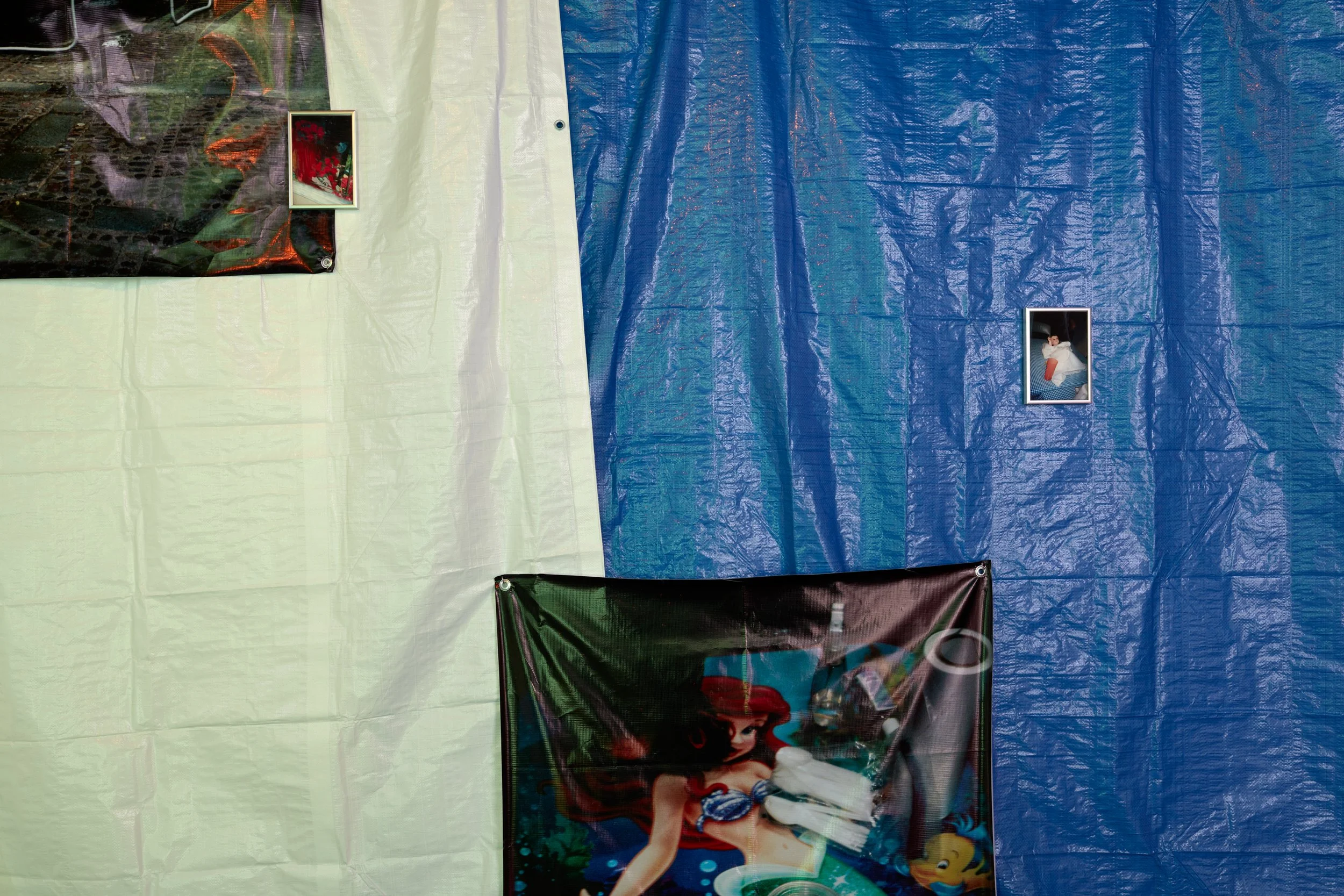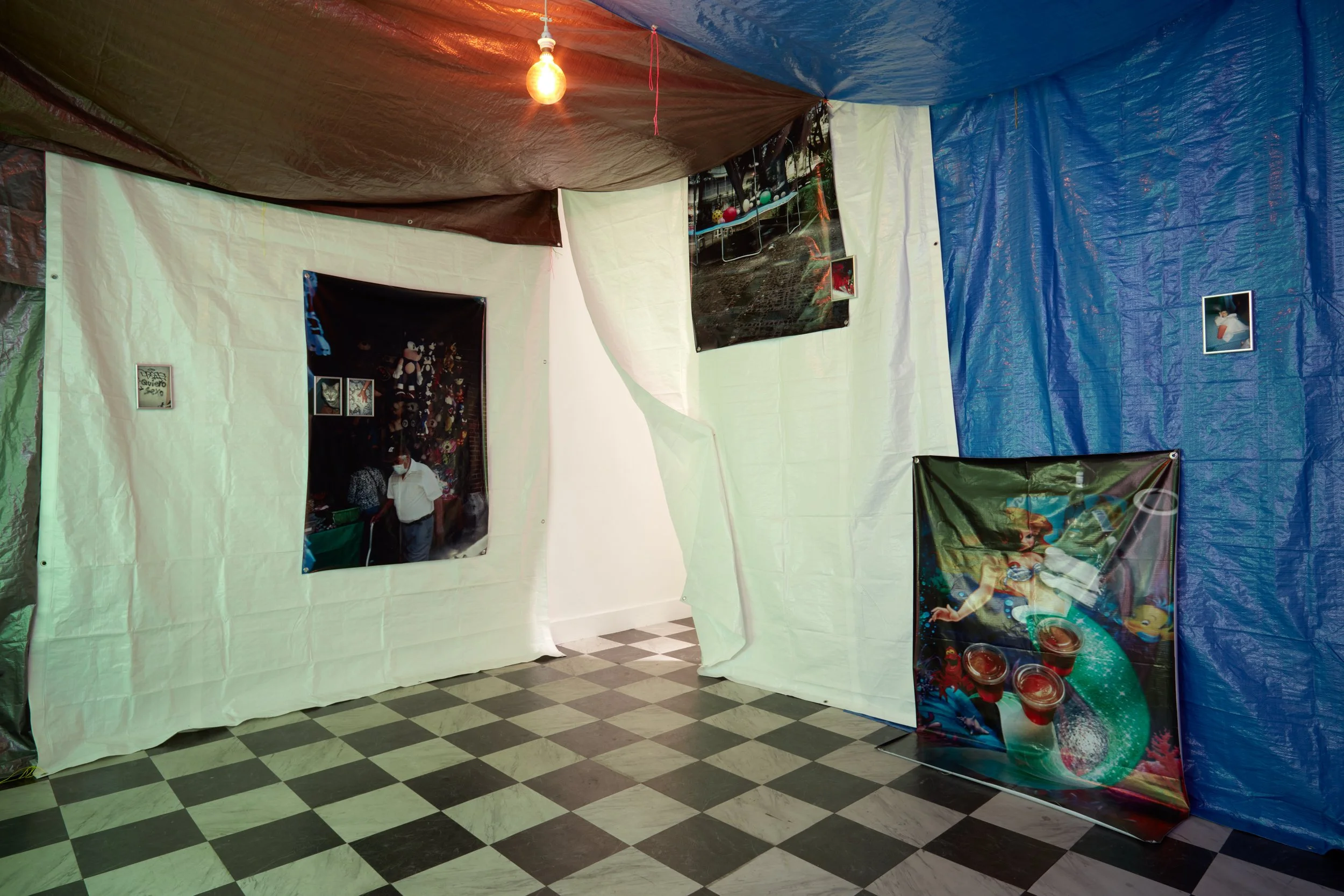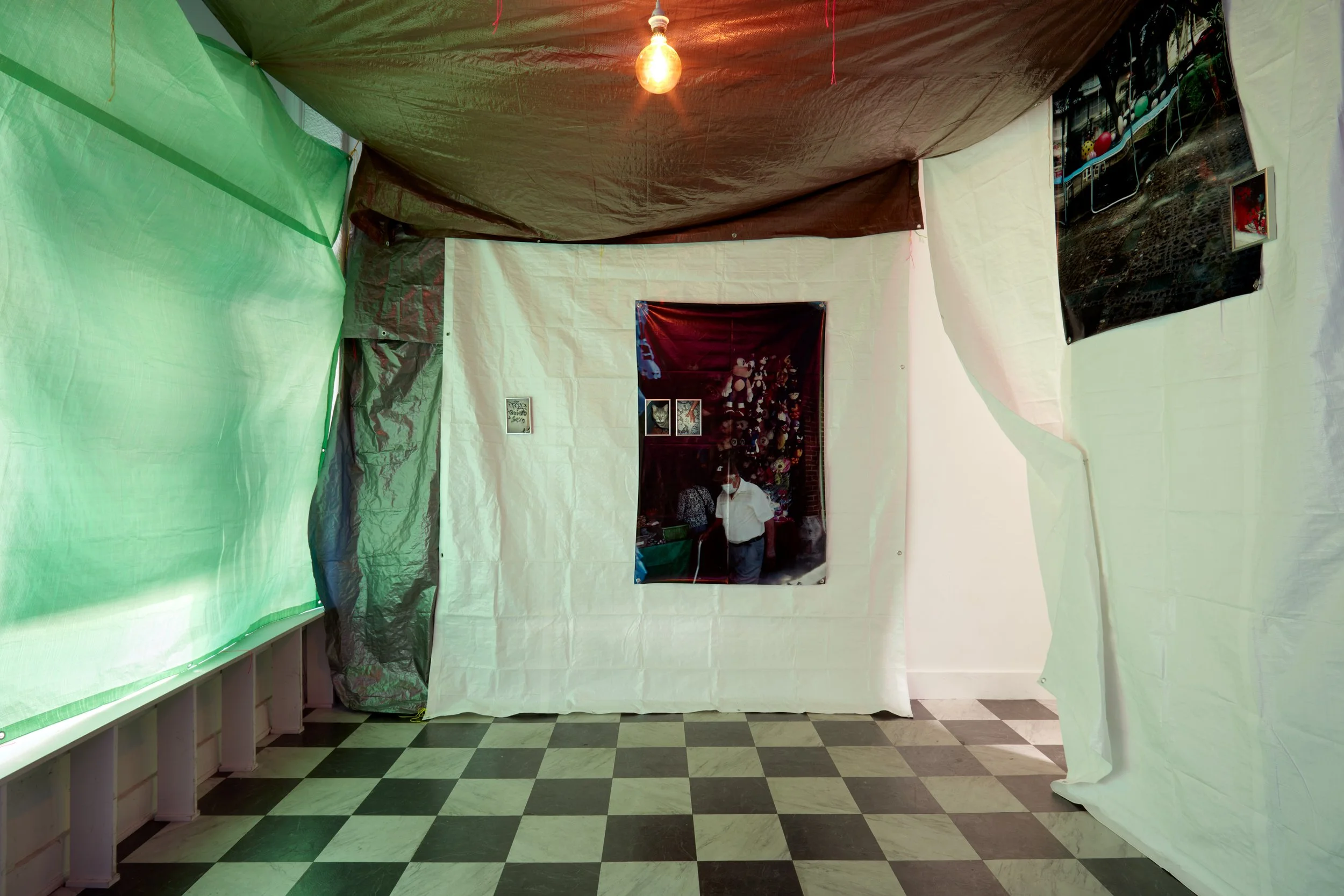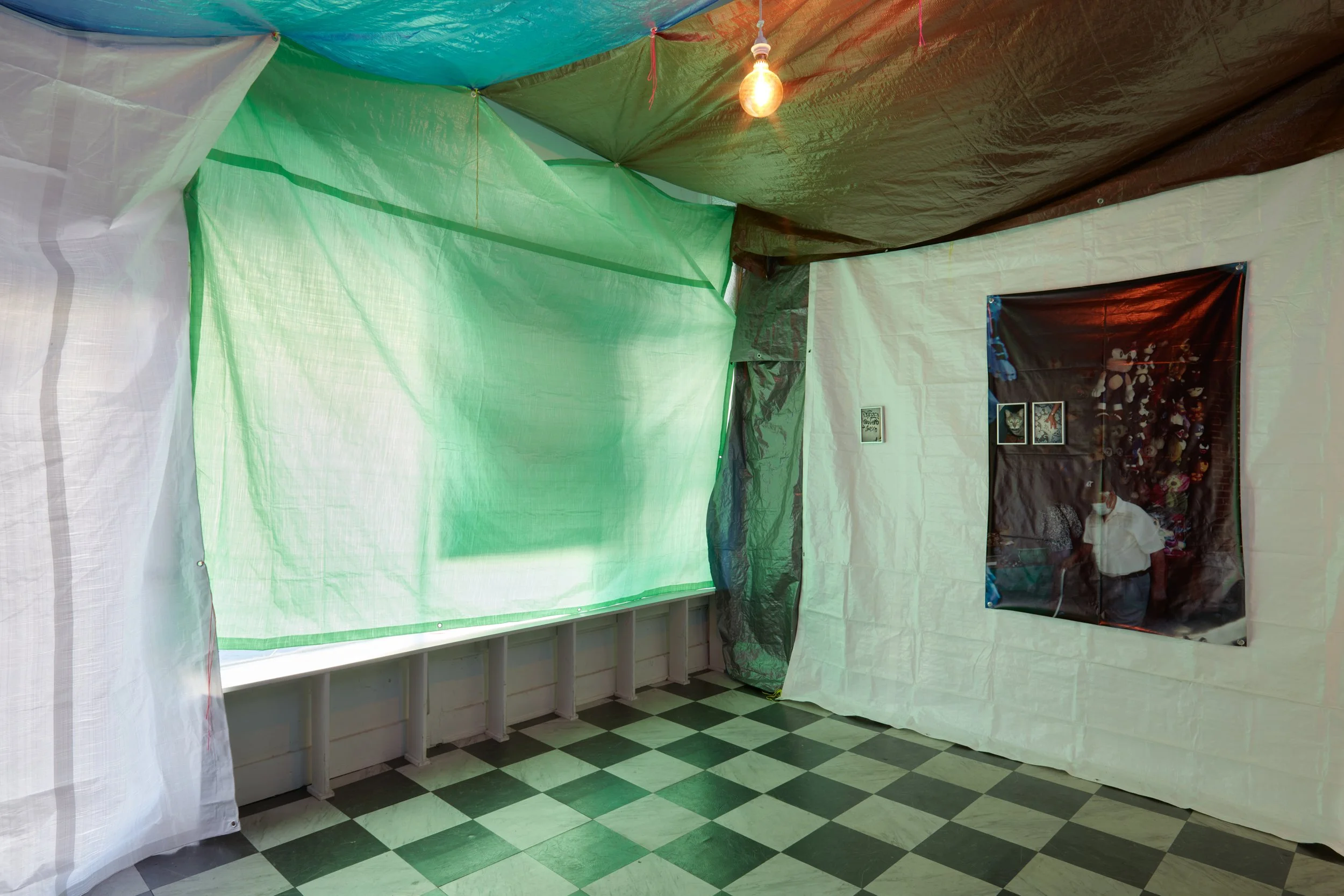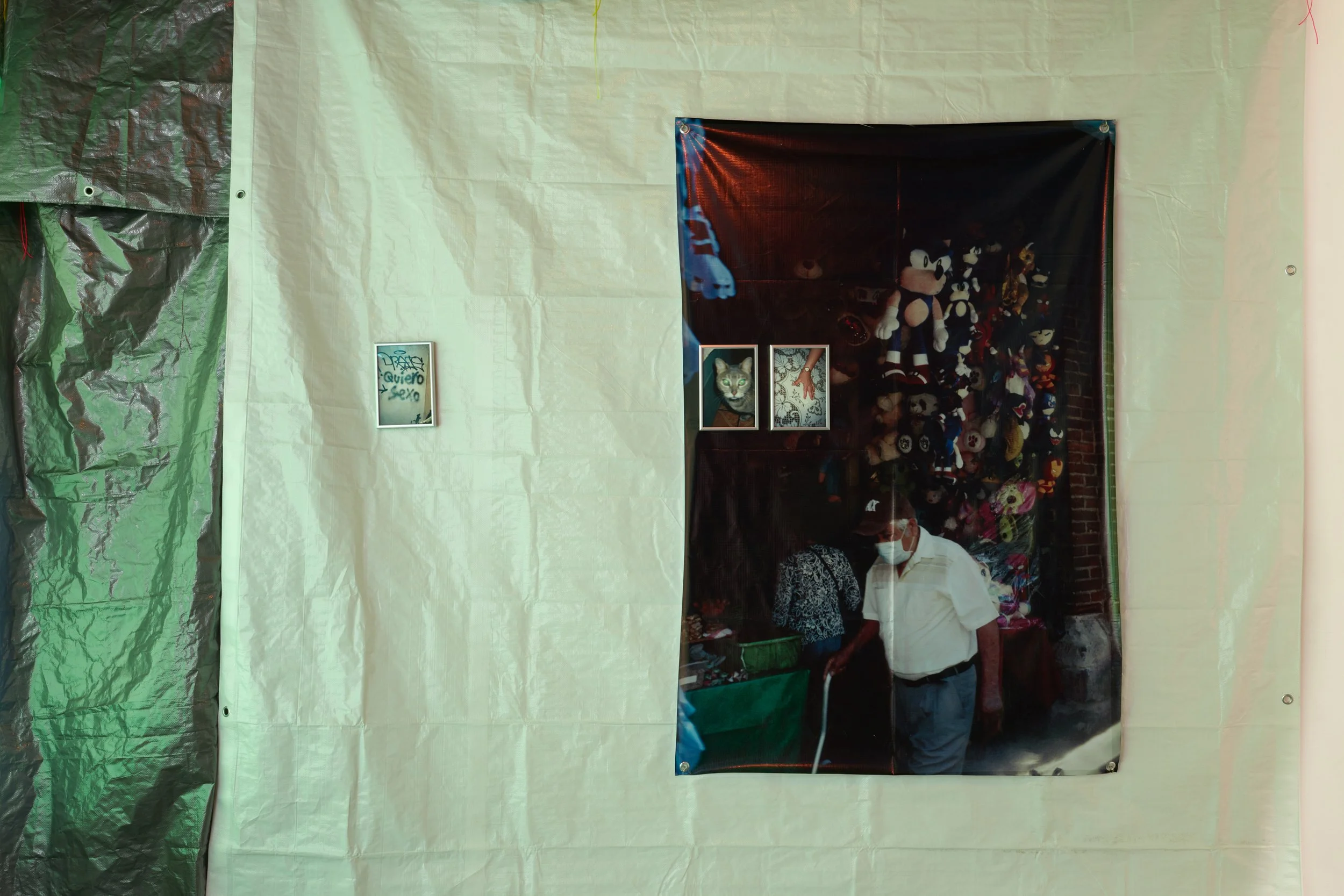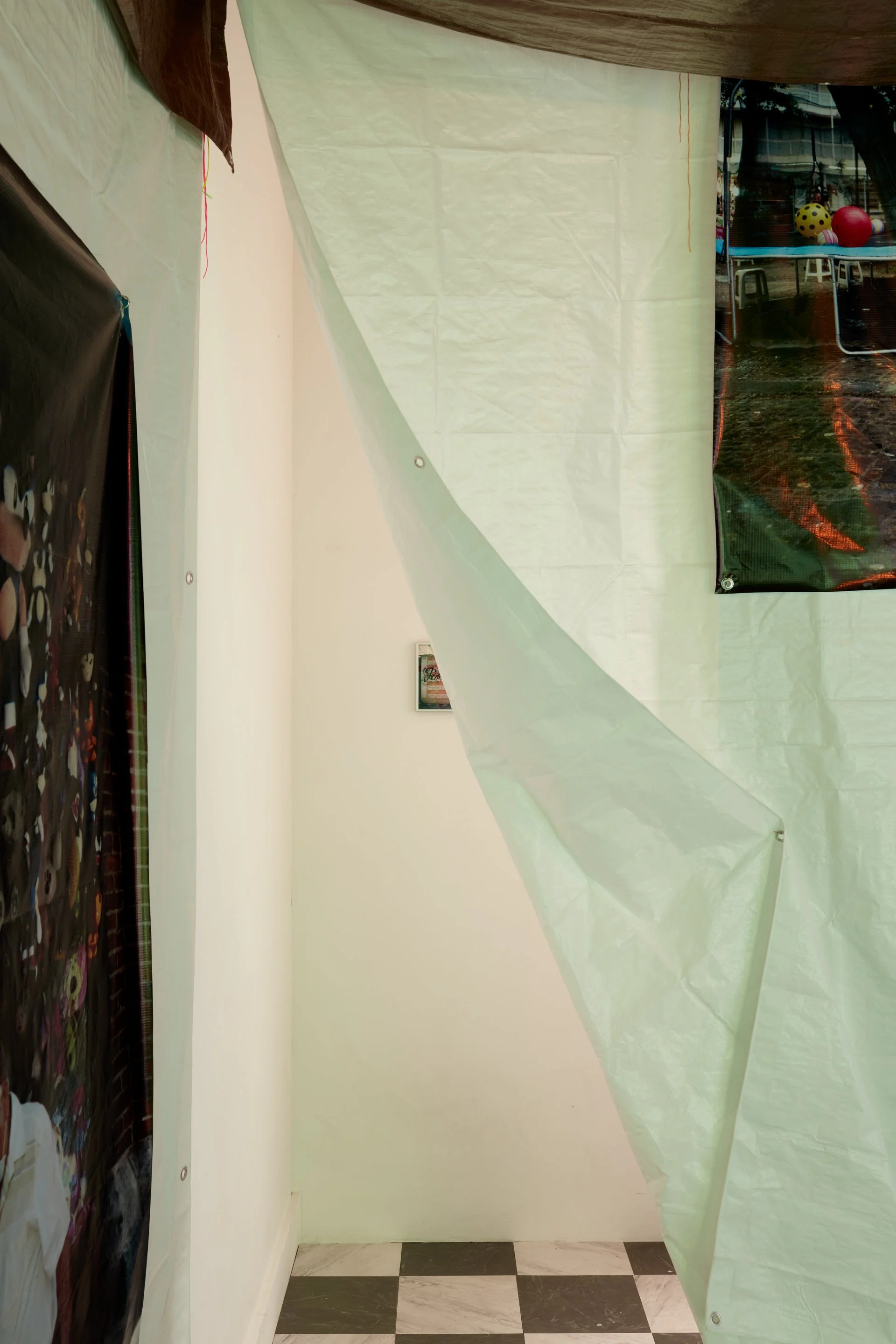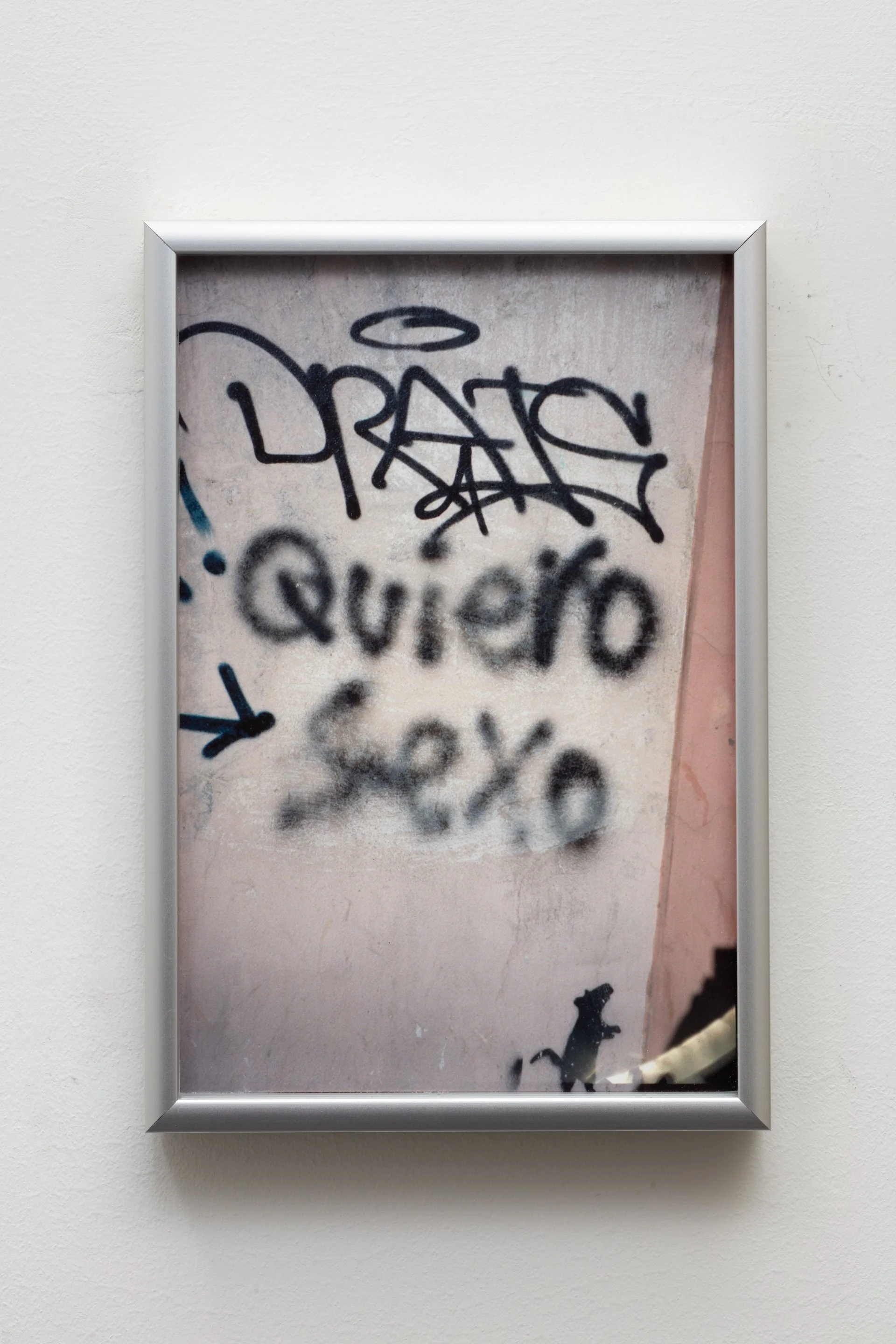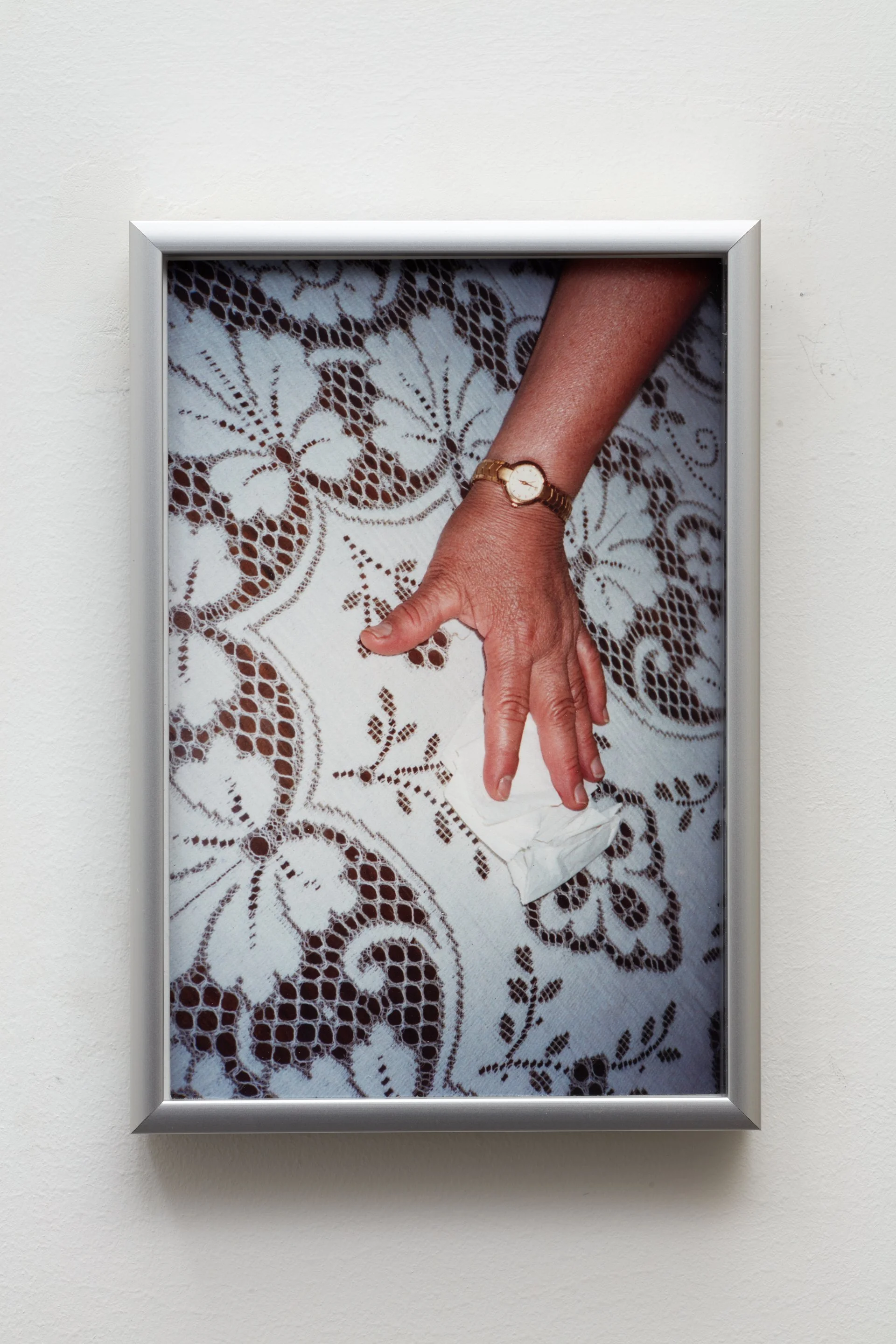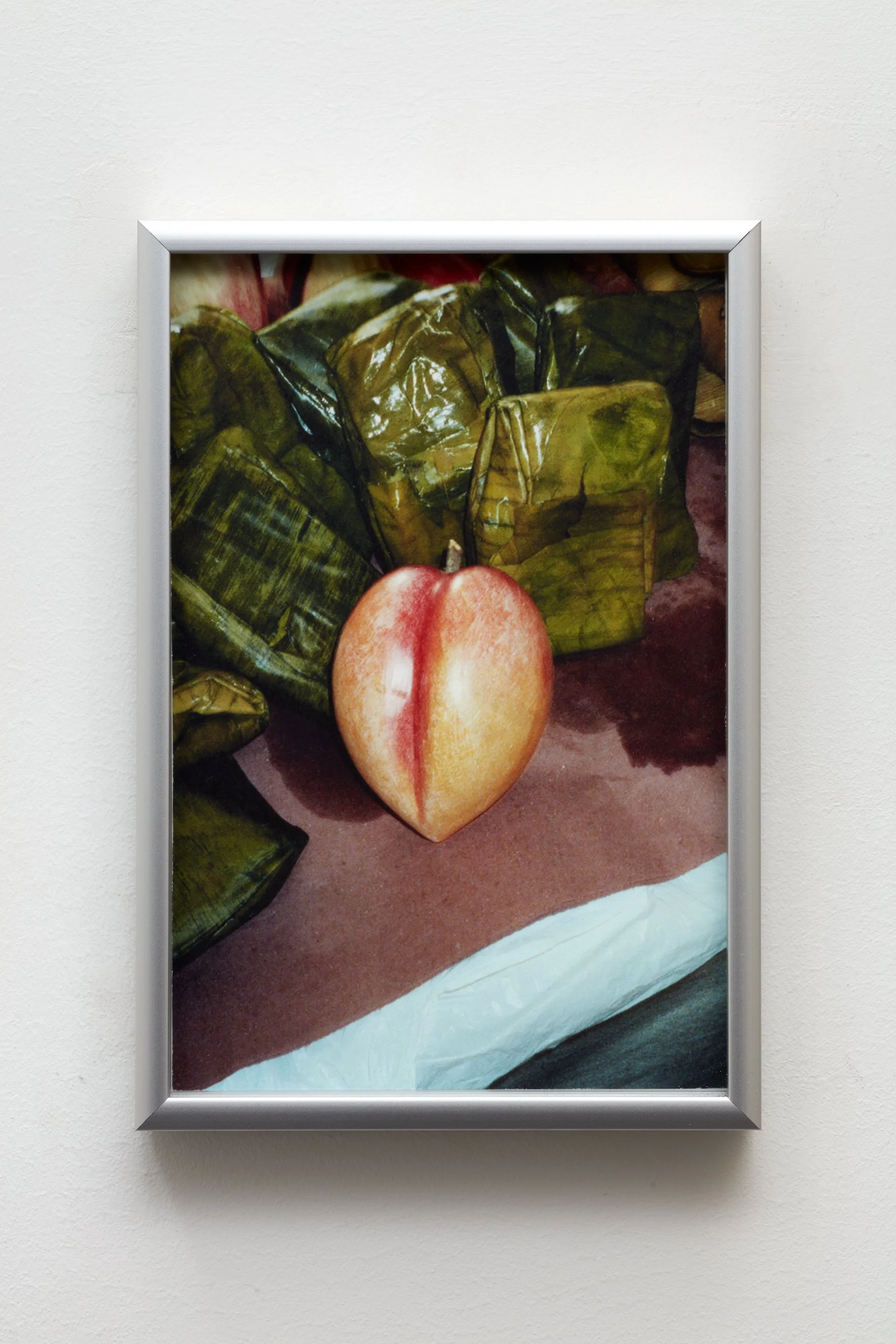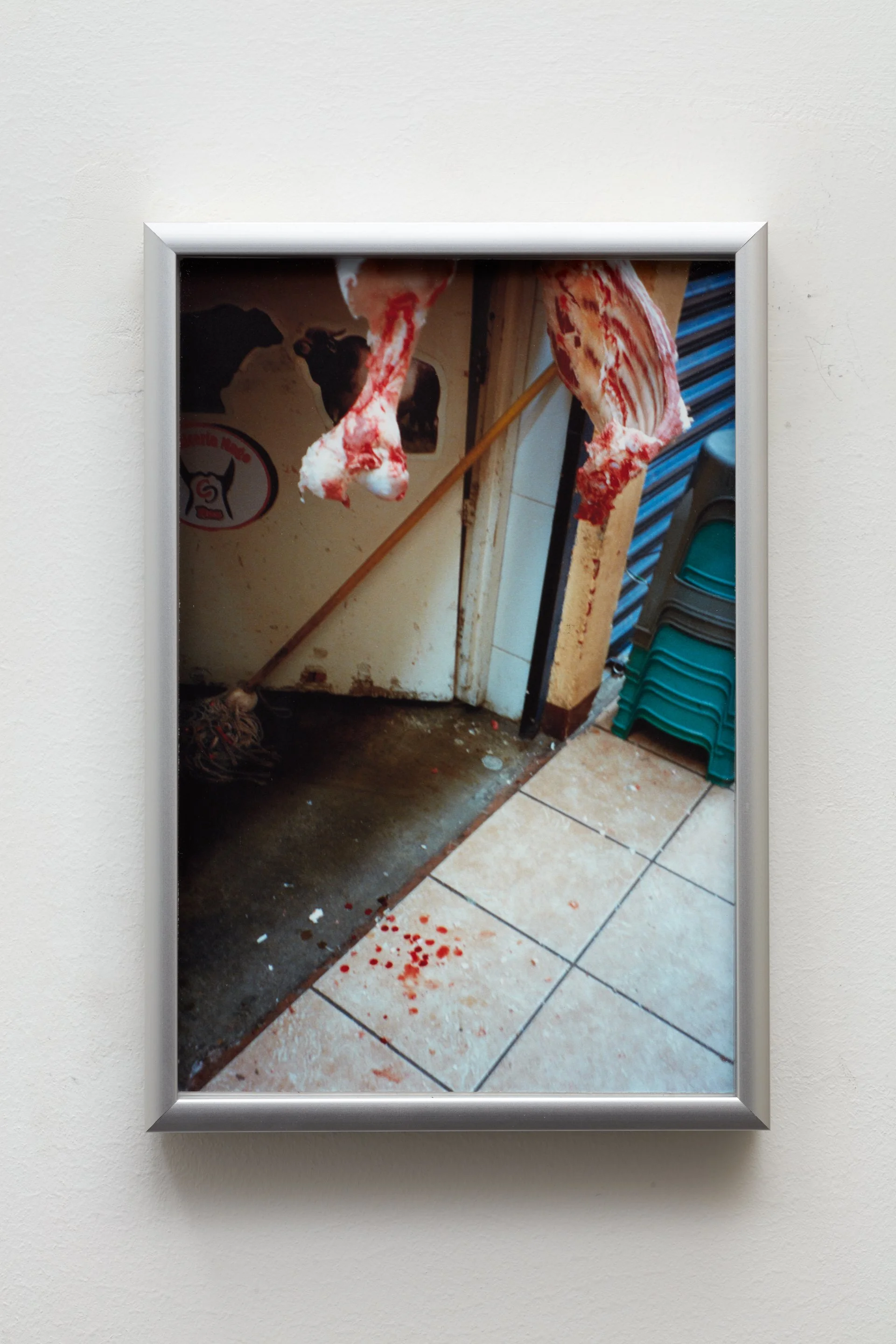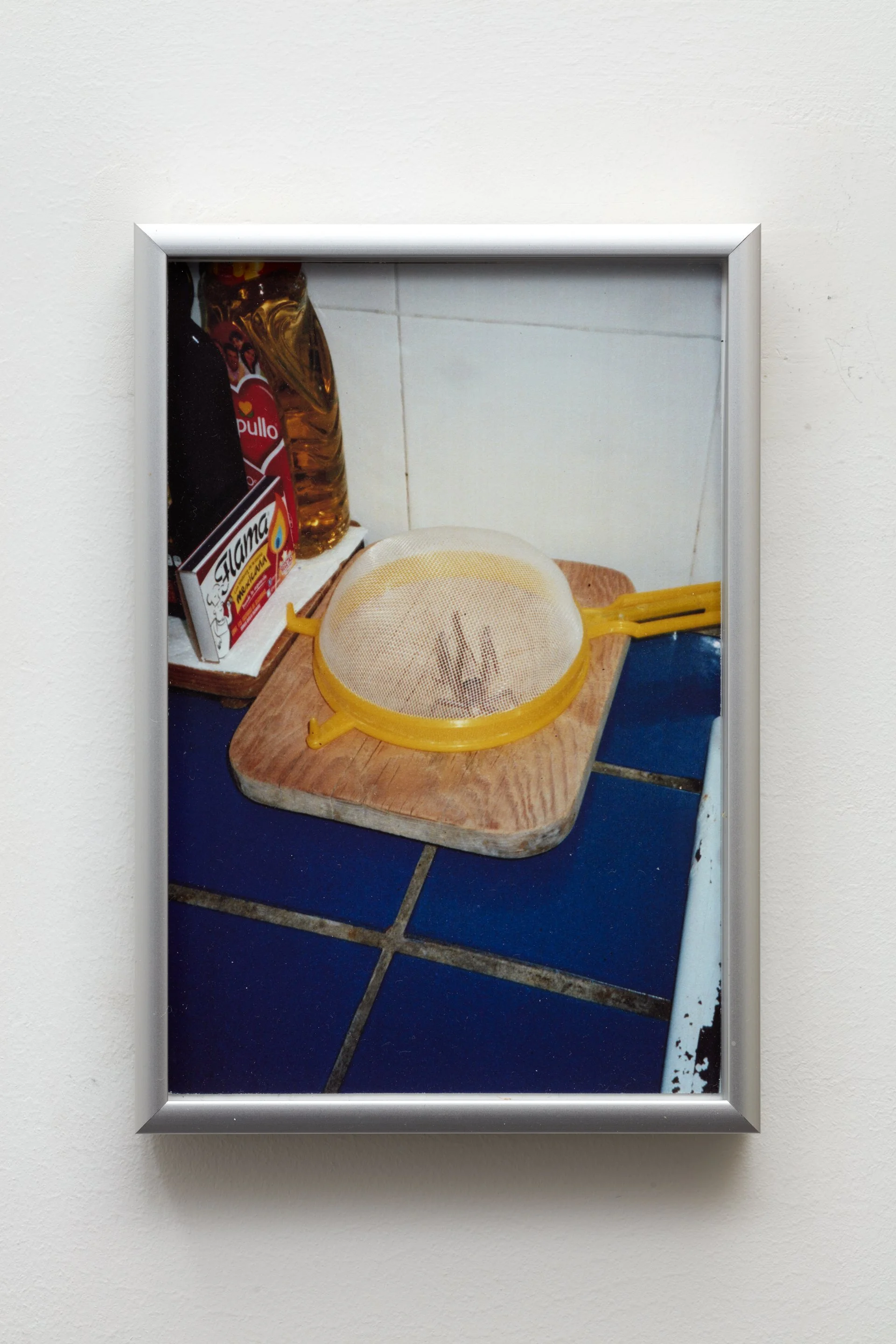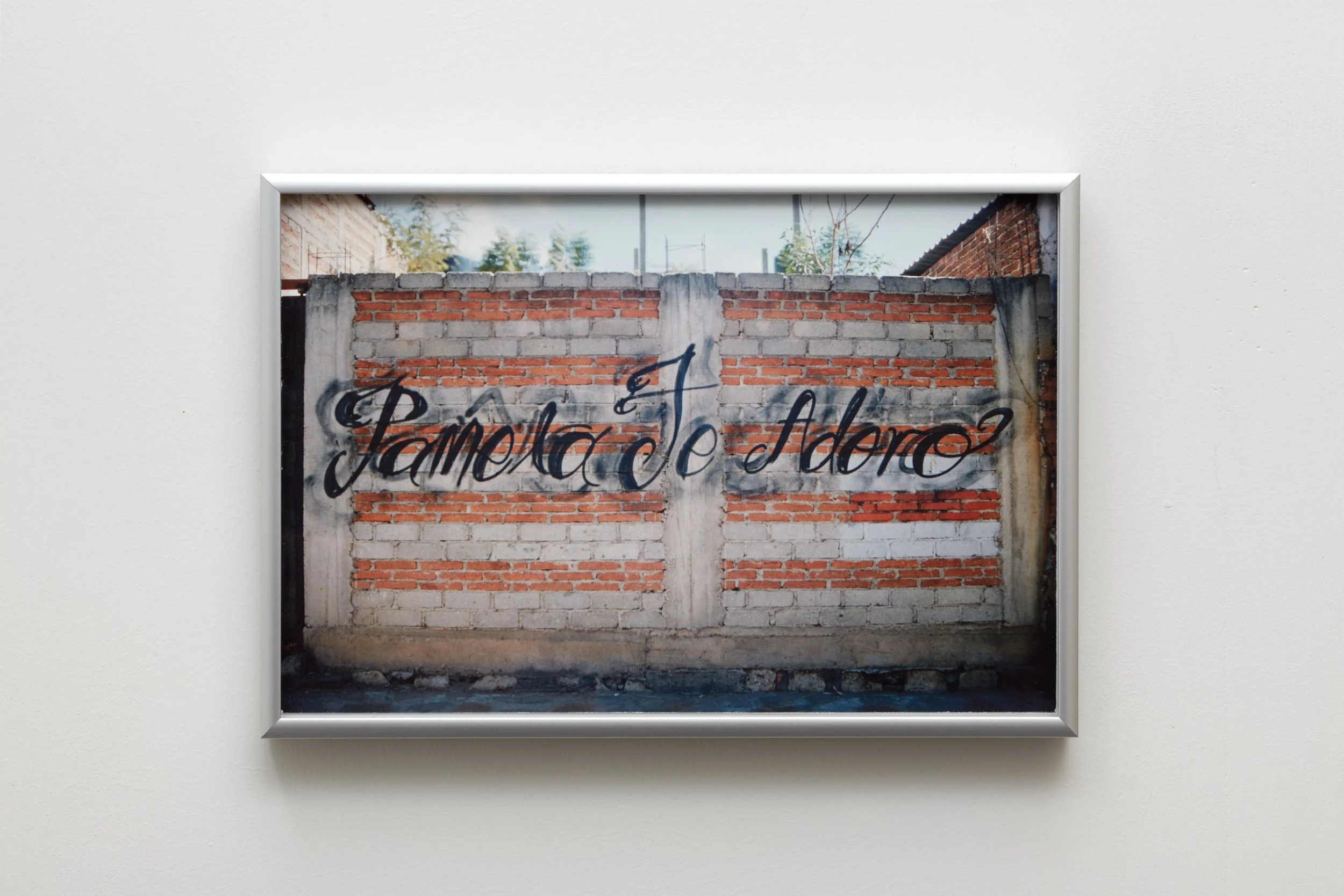Pamela Ramos
El castillo interior
Pamela Ramos’ photos encapsulate the perspective shift which distance often creates, presenting memory as fantasy and an existence which relies on absence. Our individual and collective pasts linger like ghosts and often only pull into focus once deserted. There is also a finality to this, once left the perspective cannot be reset. Large structures function in a similar way; to see the external form one must leave, dispelling any sorcery contained within. This is not a longing for the past, but more a longing for the prior vantage, knowing things will never be the same because you have grown up, but this feels less like a coming of age story and more a condensation of her previous work, a portal forward and inward, inviting you deeper into her emotional qualia.
It is an invocation of memory, not implicit, unconscious memory, nor explicit, conscious memory, but rather a numinous presence, childlike and urgent, rife with fantasy, desire, and playfulness. The images are twisted, but light, yielding a marinade of yearning and levity, her visual language pithy and adhesive.
Ramos is replicating the tarps erected during the 2006 Oaxaca Protests where a conflict between the teachers union and state collapsed into open fire on nonviolent protesters and a city-wide anarchist state lasting several months. During this time Ramos left Oaxaca, creating an interruption of experience thus unlocking a mythical quality - abrupt shifts can lead to spaces feeling imaginary.
Cave-like articulations of joined tarps exist between Ramos’ perception of private and public space. Their erection was a rejection-as-protest of the pre-existing Spanish colonial architecture, covering the buildings and creating a liminal space where people were living, buying and selling, commuting, and building intimacy in the open air. The main thoroughfare was blocked and she experienced moving through the tarps, more immediately, as a daily inconvenience and with maturity, as a commanding, visceral form of refusal. This installation is less about the literal recreation and more about the way in which images contain the power to hold a new space together; building a castle within the gallery is Ramos’ return to an image in her remembrance as a foundation for space.
The recent rebranding and gentrification of Oaxaca and the labor to erase the collective memory of violence feels palpable and frantic, allowing her memory to function as a type of escapism, akin to her grandmother echoing “you don’t have to see blood to feel the wound.” The marks of the past are made more prominent because of their concealment - secrecy and truth are both invisible. The interior space of the gallery feels like you are somewhere you shouldn't be, you are trapped, forced to look, once inside you try to remember what the outside felt like, like a gauze so thin you can only feel it with your eyes closed.
For Ramos, the emotional surpasses the political in her motivation to create. She is possessed by joy and beauty, maintaining that her inner world is pure memory, romance, yearning, and ghosts. She often speaks in terms of love, love allows one to ignore pain and hardship, but love can also function as an act of remembrance and seeing things for what they are in their fullness, Oaxaca holds space in the cache. The active erasure foisted onto the cities’ narrative allows Oaxaca to function in a ghostly way. Going home is tapping into the ghost where hues of memory exist outside of halcyon and nostalgia.
Pamela Ramos (b. 1995, Oaxaca, México) is an Aries sun, Scorpio moon, and Capricorn rising. She lives and works in Los Angeles.
-Text by Natalie Thomas, Los Angeles, 2023.
